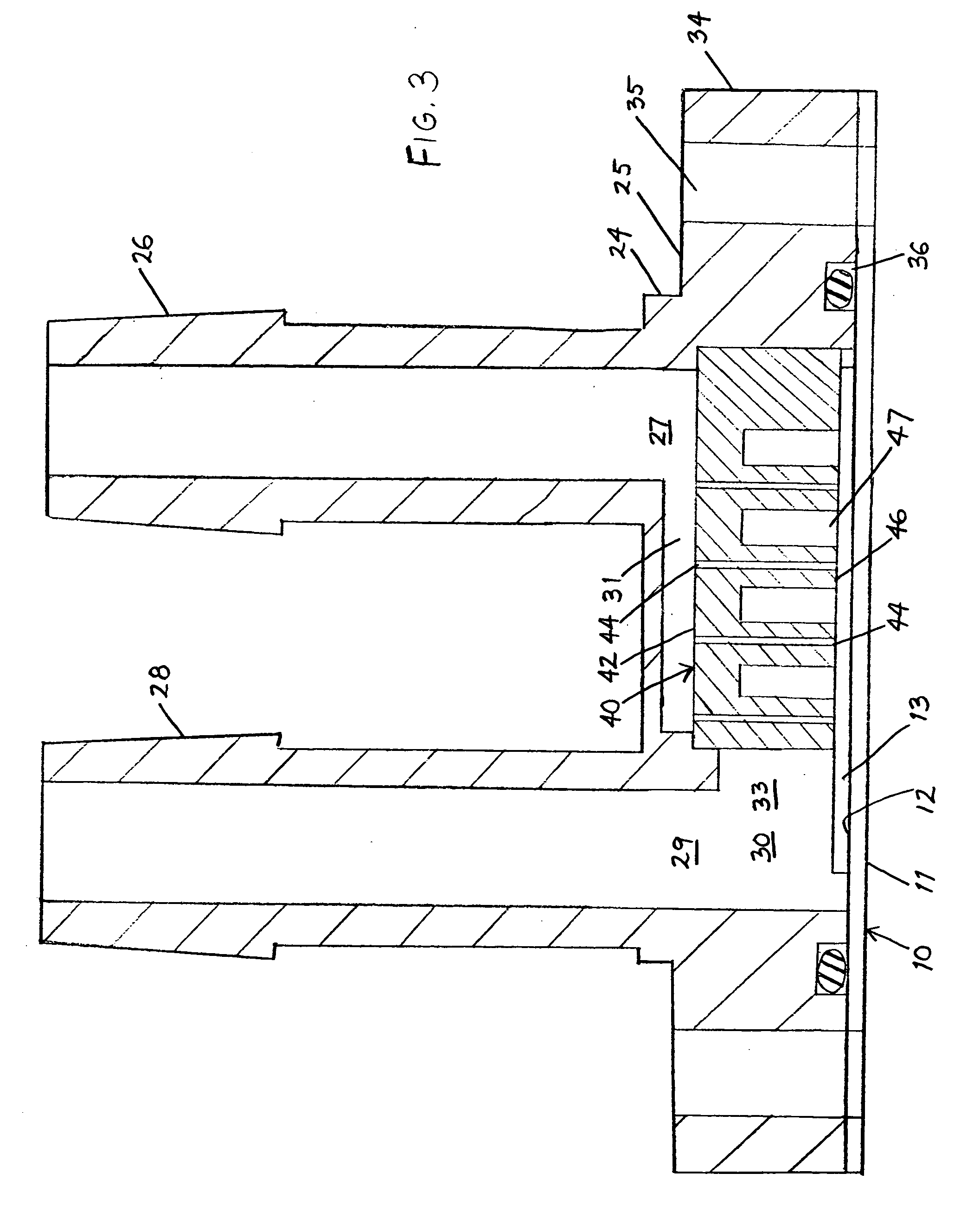Liquid cold plate heat exchanger
a technology of liquid cold plate and heat exchanger, which is applied in the direction of lighting and heating apparatus, semiconductor/solid-state device details, laminated elements, etc., can solve the problems of low pressure drop and limit the heat transfer effectiveness of cold plate, and achieve the effect of reducing the net flow rate of fluid
- Summary
- Abstract
- Description
- Claims
- Application Information
AI Technical Summary
Benefits of technology
Problems solved by technology
Method used
Image
Examples
first embodiment
[0028] Referring to FIGS. 1 and 2, the heat exchanger according to the invention includes a metal cooling plate 10 having a heat collection surface 11 for mounting against an object to be cooled, such as a semiconductor component, and an opposed heat transfer surface 12 against which fluid is circulated to remove heat. The heat transfer surface 12 is provided with an array of parallel microfins 14 upstanding from the surface 12. These fins may be formed by rolling grooves into the plate 10 and thus may have a height of as little as 0.001 in. or less. According to an alternative embodiment, shown in FIG. 1A, the heat transfer surface is provided with a random surface enhancement in the form of a porous foam pad 16. A cover 20, which is fitted over the cooling plate 10, has a top 22 provided with an inlet nipple 26 and an outlet nipple 28 for connecting fluid conduits to circulating means such as a pump, and is surrounded by a circumferential wall 24 and a mounting base 25. The base 2...
second embodiment
[0031] heat exchanger according to the invention is shown in FIGS. 4 and 5. The cooling plate 50 has a heat collection surface 51, a heat transfer surface 52, and microfins 54 on the heat transfer surface. The cover 60 has a base 62, as well as a front wall 64, a rear wall 65, and opposed sidewalls 66 upstanding from the edges of the base. The cover 60 is fitted to the cooling plate 50 to form a cooling chamber 61, and may be fixed by brazing (where both components are metal), adhesive bonding, or mechanical fixing with a gasket.
[0032] The flow distributor is formed by a serpentine wall 70 fixed to the base 62 and extending between the sidewalls 66, thereby dividing the cooling chamber 61 into an inlet section 72 supplied by inlet port 67 and an outlet section 74 which supplies outlet port 68. The serpentine wall 70 forms inlet channels 73 in the inlet section 72, and outlet channels 75 in the outlet section 74, wherein the inlet channels 73 alternate with the outlet channels 75. Th...
PUM
 Login to View More
Login to View More Abstract
Description
Claims
Application Information
 Login to View More
Login to View More - R&D
- Intellectual Property
- Life Sciences
- Materials
- Tech Scout
- Unparalleled Data Quality
- Higher Quality Content
- 60% Fewer Hallucinations
Browse by: Latest US Patents, China's latest patents, Technical Efficacy Thesaurus, Application Domain, Technology Topic, Popular Technical Reports.
© 2025 PatSnap. All rights reserved.Legal|Privacy policy|Modern Slavery Act Transparency Statement|Sitemap|About US| Contact US: help@patsnap.com



